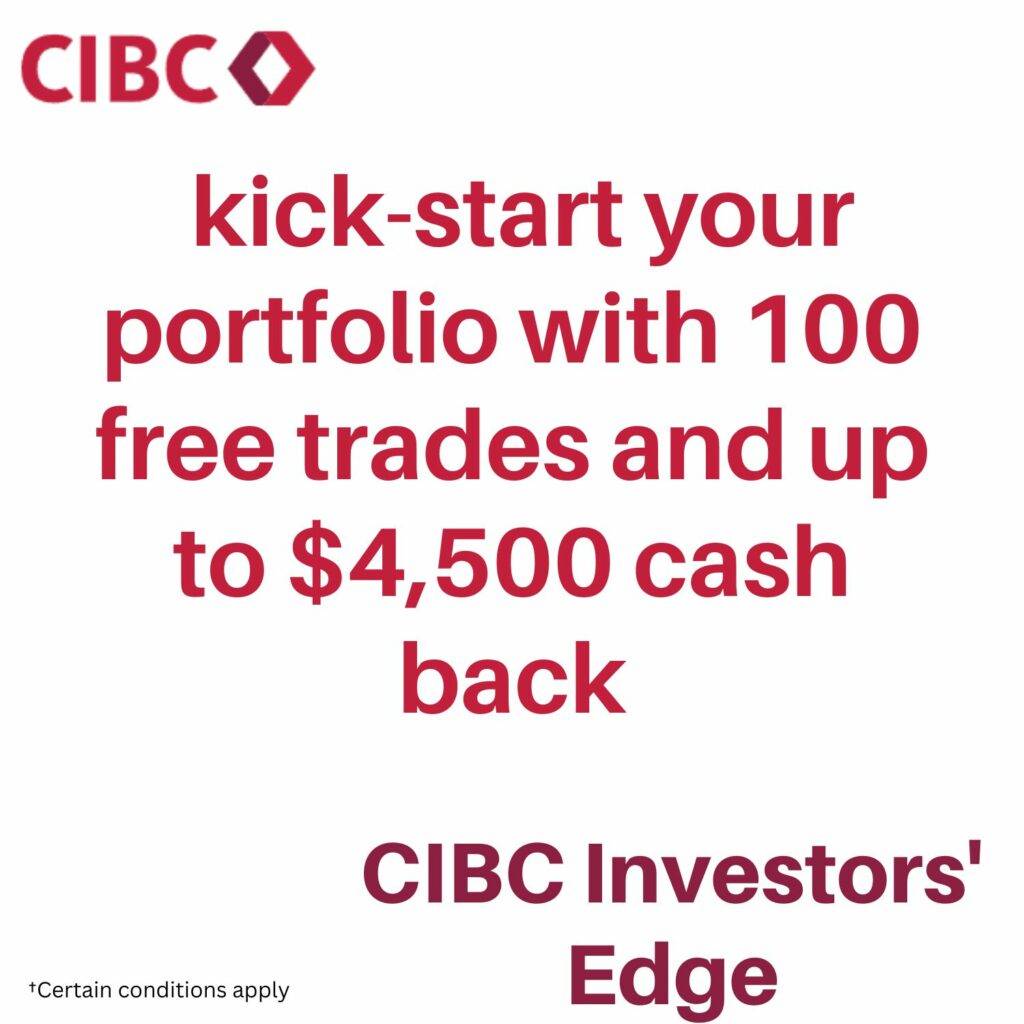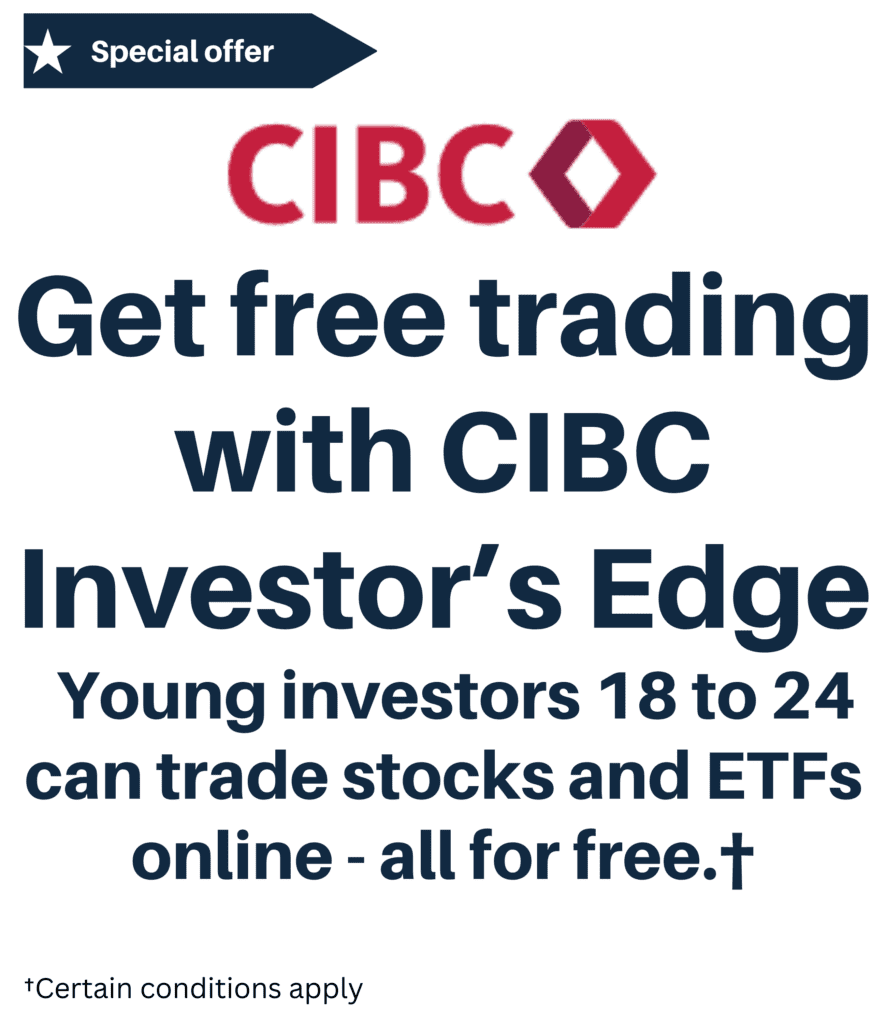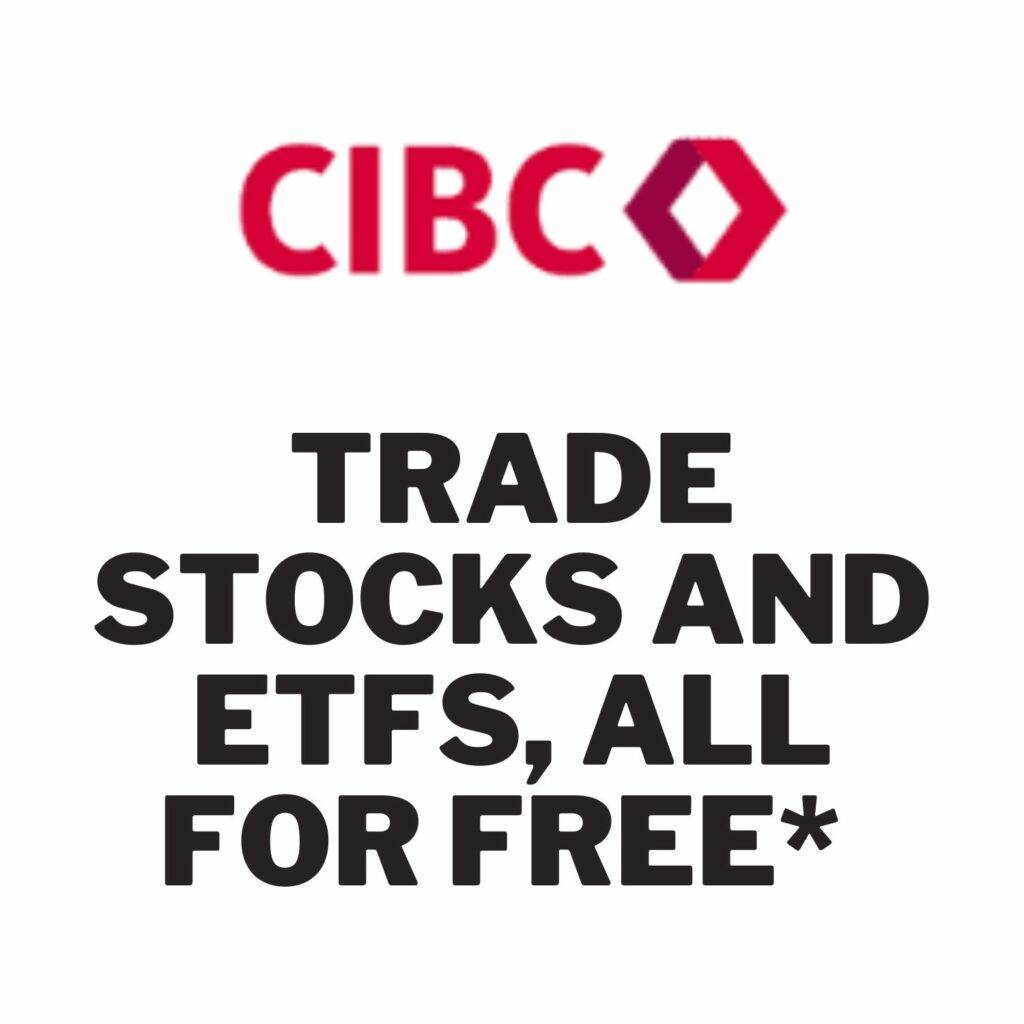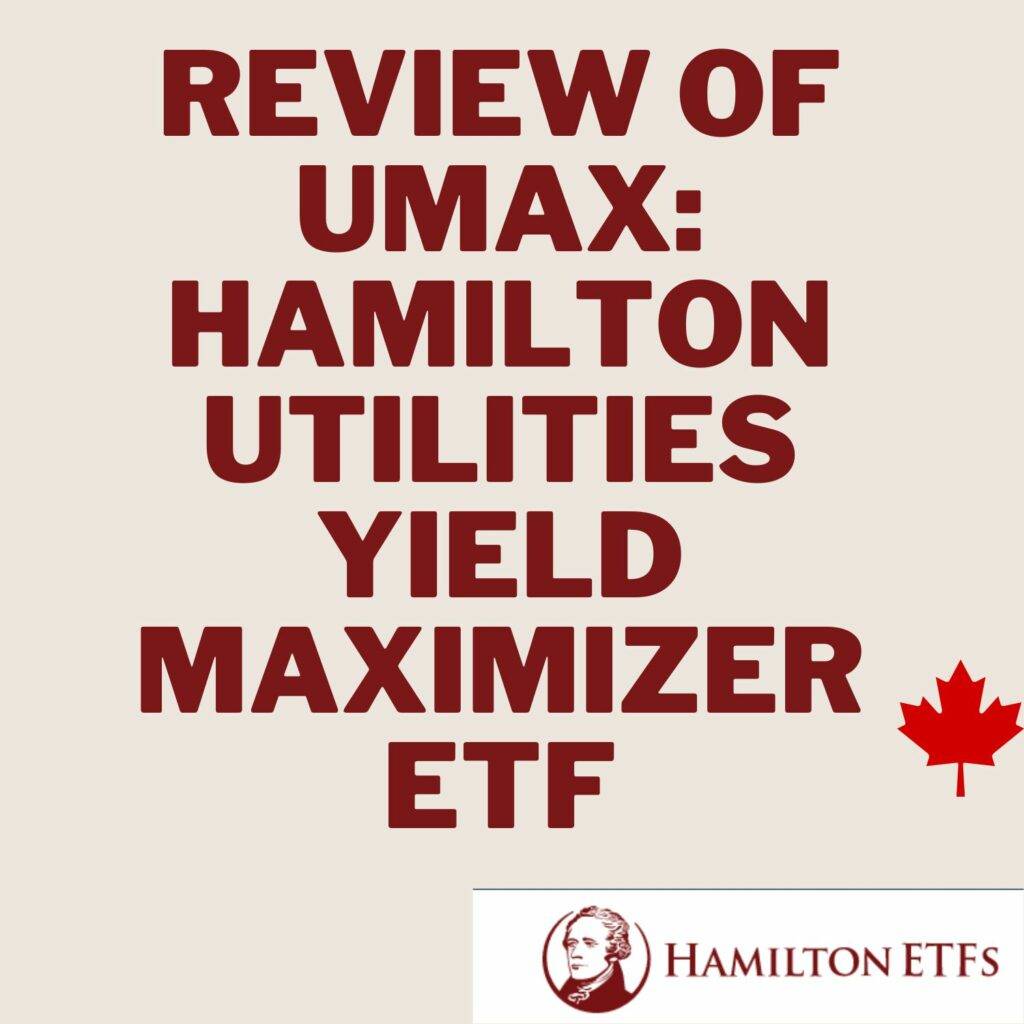Investment Objective
Hamilton introduced a new ETF called UMAX, which focuses on the utilities sector (UMAX was launched June 14th 2023). This ETF is designed to provide investors with attractive monthly income while offering exposure to a diversified portfolio of utility services equity securities primarily listed in Canada and the U.S. UMAX aims to reduce volatility and enhance dividend income by employing an active covered call strategy. This post is also available in Video format.

Unlike some other income ETFs, UMAX does not utilize leverage. However, it still aims to generate higher monthly income for investors. It offers exposure to blue-chip Canadian utilities, including pipelines, telecoms, and railways. By implementing the covered call strategy, UMAX seeks to enhance monthly income and reduce volatility. Currently, the coverage through covered calls is approximately 50%.
UMAX targets a yield of 13% or more, with monthly distributions to provide consistent income.
Investors can access UMAX, along with other Hamilton ETFs, on the Toronto Stock Exchange (TSX). These ETFs can be included in various portfolios, such as RRSP, RRIF, DPSP, RDSP, FHSA, RESP, and TFSA. Additionally, for investors interested in a Dividend Reinvestment Plan (DRIP), they can contact their individual brokerage for setup details.
Similar funds from Hamilton ETFs
In addition to UMAX, Hamilton offers other notable ETFs in their lineup, including HMAX Hamilton Canadian Financials Yield Maximizer and HYLD Hamilton Enhanced U.S. Covered Call ETF.
HMAX is designed to maximize yield within the Canadian financials sector. It aims to provide investors with attractive monthly income by investing in a diversified portfolio of Canadian financial companies. On the other hand, HYLD focuses on the U.S. market and utilizes a similar covered call strategy to generate income and reduce volatility. It seeks to provide enhanced yield potential by investing in a diversified portfolio of U.S. securities, primarily in the large-cap segment.
BMO Covered call ETF list – Full comparison
Review HYLD: Hamilton Enhanced U.S. Covered Call ETF
Review of HMAX: Hamilton Canadian Financials Yield Maximizer
How UMAX is able to set such high dividend yield target?
According to the issuers’ website, UMAX is able to provide higher monthly income for two reasons:
- UMAX writes covered call options on approximately 50% of the portfolio
- The fund is currently writing option At The Money (ATM) wheras similar funds are writing options OTM (Out of The Money).
UMAX vs ZWU vs HUTE ETF
Strategy
UMAX: This ETF allocates 50% of its portfolio and uses at-the-money (ATM) options. It offers a dividend yield of approximately 13%* and does not employ leverage.
ZWU: Similar to UMAX, ZWU also allocates 50% of its portfolio, but it utilizes out-of-the-money (OTM) options. It has a dividend yield of approximately 8.6% and does not employ leverage.
HUTE: HUTE allocates 33% of its portfolio using OTM options and offers a dividend yield of 9.8%. It employs 25% leverage to amplify returns.
| % potfolio | Option strategy | Divdend Yield approx | Leverage | |
| UMAX | 50% | ATM | 13%* | No |
| ZWU | 50% | OTM | 8.6% | No |
| HUTE | 33% | OTM | 9.8% | 25% |

ATM vs OTM Options
I invite you to consult the table below to understand the difference. As you can see, the UMAX fund has chosen to issue ATM call options because they are more profitable than OTM options. First, the premium is higher than that generated by an OTM strategy. However, the risk of loss is also higher.
The risk for an option always corresponds to the probability that the buyer will exercise it. If the strike price is higher than the current price (OTM), the chances of the option being exercised are low. However, the probability of the option being exercised is more plausible for an ATM option where the strike price is very close or equal to the stock’s current price.
Table
| Premium or option price | Risk | Reward | |
| ITM (In the money call option) Stock price > Strike price | High | High | High |
| OTM (Out of the money call option) Stock price < Strike price | Cheap | Low | Low |
| ATM (At The Money call option) Stock price = Strike price | Medium | Medium | Medium |
Video
Summary table Risk vs Benefits of a covered call strategy
| Aspect | Description |
|---|---|
| Strategy | Selling call options on a security already owned in the portfolio |
| Name | Covered call strategy |
| Risk | Potential for limited upside if the stock price rises above the strike price |
| Benefit | Generates additional income through premium payments received from selling call options |
| Goal | To earn income from stock holdings while potentially reducing downside risk |
| Use | Often used by investors who are willing to sell their stock at a certain price if it reaches that level |
| Outcome | If the stock price stays below the strike price, the option expires worthless, and the investor keeps the premium payment. If the stock price rises above the strike price, the option buyer may exercise their right to buy the stock, and the investor must sell the stock at the strike price, but still keeps the premium payment. |
UMAX Portfolio of stocks

| TICKER | NAME | WEIGHT |
| BCE | BCE Inc | 7.7% |
| TRP | TC Energy Corp | 7.7% |
| ENB | Enbridge Inc | 7.7% |
| RCI/B | Rogers Communications Inc | 7.7% |
| FTS | Fortis Inc/Canada | 7.7% |
| EMA | Emera Inc | 7.7% |
| PPL | Pembina Pipeline Corp | 7.7% |
| WCN | Waste Connections Inc | 7.7% |
| CNR | Canadian National Railway Co | 7.7% |
| H | Hydro One Ltd | 7.7% |
| T | TELUS Corp | 7.7% |
| NPI | Northland Power Inc | 7.7% |
| CP | Canadian Pacific Kansas City Ltd | 7.7% |
Management fees
| Management Fee | 0.65% |
UMAX Dividends
| Amount | Adj. Amount | Ex-Div Date | Record Date | Pay Date | Declare Date |
|---|---|---|---|---|---|
| 0.1710 | 0.1710 | 5/31/2024 | 5/31/2024 | 6/7/2024 | 5/24/2024 |
| 0.1710 | 0.1710 | 4/29/2024 | 4/30/2024 | 5/7/2024 | 4/23/2024 |
| 0.1716 | 0.1716 | 3/27/2024 | 3/28/2024 | 4/5/2024 | 3/21/2024 |
| 0.1715 | 0.1715 | 2/28/2024 | 2/29/2024 | 3/7/2024 | 2/22/2024 |
| 0.1721 | 0.1721 | 1/30/2024 | 1/31/2024 | 2/9/2024 | 1/23/2024 |
Sector Allocation
UMAX ETF provides a diversified portfolio with sector allocations designed to capture opportunities across different segments of the market. The fund’s sector allocation includes Communication Services (23.5%), Pipelines (23.1%), Industrials (23.9%), and Utilities (30.9%).
Communication Services focuses on telecommunications, media, and entertainment. Pipelines offer exposure to essential energy infrastructure. Industrials cover manufacturing, transportation, and construction. Utilities provide stability and income generation potential.
The UMAX ETF’s sector allocation aims to balance growth potential, income generation, and stability, offering investors a well-rounded investment approach. As with any investment, thorough research and consideration of personal circumstances are recommended. Consulting with a financial advisor is advised.
Final thought: is UMAX is the right ETF for you?
If you’re in pursuit of consistent dividend income, you’ve likely come across the UMAX ETF, which offers an alluring yield through its covered call strategy. This approach can indeed provide an attractive stream of income, but there are some key considerations to bear in mind.
Firstly, the high distribution offered by UMAX can be a double-edged sword. While it’s great for generating income, it may also increase your tax burden, so it’s wise to consult with a tax advisor to understand the implications for your specific situation.
Secondly, it’s important to understand that the covered call strategy comes with limitations. By design, it can cap the potential for growth. As highlighted in this post, roughly 50% of the UMAX portfolio is impacted by this strategy. The use of at-the-money (ATM) options is primarily aimed at boosting income, often at the expense of significant growth.
So, who is UMAX best suited for? This ETF is more aligned with investors who have a genuine need for a monthly income source and are willing to tolerate moderate volatility. If you can stomach the ups and downs and prioritize income over the potential for substantial long-term price appreciation, then UMAX may align with your financial goals.
However, it’s crucial to remember that no investment comes without trade-offs. The covered call strategy provides stability and income, but it may not deliver the same growth prospects as other investments. Your choice should depend on your unique financial circumstances, risk tolerance, and investment objectives.
In conclusion, UMAX can be a valuable tool for income-focused investors, but it’s not a one-size-fits-all solution. Consider your long-term goals, tax implications, and willingness to accept moderate volatility when deciding if this ETF is the right fit for your portfolio.

